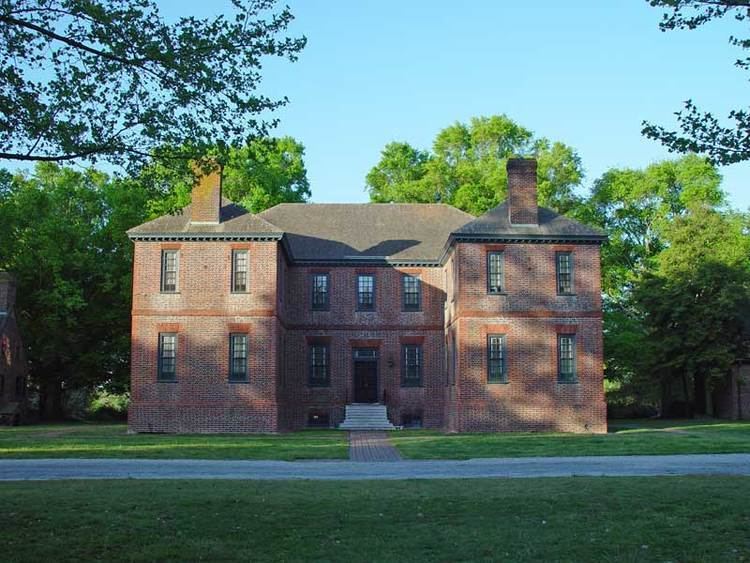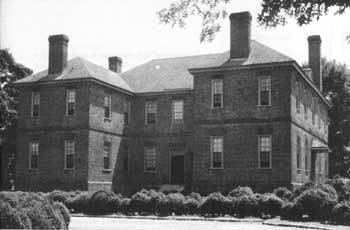Built 1758 VLR # 050-0022 Designated VLR May 13, 1969 Area 12.14 km² Added to NRHP 12 November 1969 | NRHP Reference # 69000252 Designated NHL November 11, 1971 Opened 1758 Architectural style Georgian architecture | |
 | ||
Similar Chericoke, Sweet Hall, Green Spring Plantation, Brandon, Sabine Hall | ||
Elsing Green Plantation, a National Historic Landmark and wildlife refuge, rests upon nearly 3,000 acres (1,200 ha) along the Pamunkey River in King William County, Virginia, a rural county on the western end of the state’s middle peninsula, approximately 33 miles (53 km) northeast of the City of Richmond. The 18th-century plantation, now owned by the Lafferty family, has been in continuous operation for more than 300 years. In addition to the plantation house, dependency buildings and cultivated land, Elsing Green includes 2,454 acres (993 ha) of surrounding farmland, forest and marsh land. Elsing Green is also on the Virginia Landmarks Register and in the National Register of Historic Places.
Contents

Its history dates back nearly three centuries with ties to the West family of Lord Delaware. The original structure, a brick Jacobean lodge now serving as the east dependency of the manor house, was built before 1690 by Colonel John West. It is said that Lord Delaware used the building as his hunting lodge, escaping to the King William woods by way of the Pamunkey River. Now serving as a wildlife refuge, no hunting is allowed on the property or surrounding wetlands.

History

Although fire during the American Civil War destroyed many of the records detailing the history of Elsing Green, the Lafferty Foundation holds to what it believes as an accurate account of the plantation’s history.

The plantation was passed down through the West family after the death of Colonel John West in 1692. It eventually became associated with the Dandridge family of George Washington’s wife, Martha Custis. It is said that Martha Custis Washington actually rode her horse through the house.

The Dandridges built the Queen Anne manor house and kitchen house between 1715 and 1720. Carter Braxton, a signer of the United States Declaration of Independence, bought the plantation in 1753.

The plantation, through several inheritances and purchases, was eventually sold in the 1930s to Beverly D. Causey, whose family took it upon themselves to restore the then degraded property and structures.
Nearly two decades later, the family of the current owners, purchased Elsing Green. In 1950, Edgar R. Lafferty, Jr., and his wife, Margaret, continued the restoration and expanded the plantation by adding previously purchased land adjacent to Elsing Green.
The Lafferty family formed the Lafferty Foundation to help preserve and protect Elsing Green after Edgar Lafferty, Jr.’s death. The tax-exempt organization acquired the plantation after Edgar Lafferty, Jr.’s death. To further ensure its preservation, Lafferty granted historic preservation easements to the Virginia Historic Landmarks Commission and the Virginia Outdoors Foundation.
Architecture and furnishings
The exterior of the Queen Anne manor house is Flemish-bond brickwork, with its erection dating back to between 1715 and 1720. It is two-stories and U-shaped, with east and west wings jutting to the north. Doors on either side of the wing lead to a detached east dependency home (the original hunting lodge) and a west kitchen house. The Pamunkey River lies just 250 yards (230 m) from the home.
In the home is 18th-century American and English furniture, including the “Surrender Table” on which the American and French negotiated terms of surrender with the English over the Battle of Yorktown of the American Revolutionary War.
